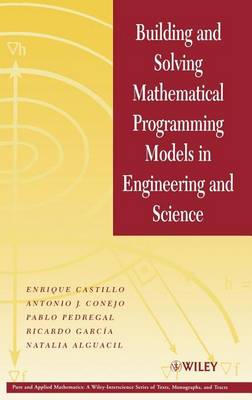Pure and Applied Mathematics: A Wiley Series of Texts, Monographs and Tracts
2 primary works
Book 38
Orthogonal Sets and Polar Methods in Linear Algebra
by Enrique Castillo, Angel Cobo, Francisco Jubete, and Rosa Eva Pruneda
Published 3 March 1999
A unique, applied approach to problem solving in linear algebra Departing from the standard methods of analysis, this unique book presents methodologies and algorithms based on the concept of orthogonality and demonstrates their application to both standard and novel problems in linear algebra. Covering basic theory of linear systems, linear inequalities, and linear programming, it focuses on elegant, computationally simple solutions to real-world physical, economic, and engineering problems. The authors clearly explain the reasons behind the analysis of different structures and concepts and use numerous illustrative examples to correlate the mathematical models to the reality they represent.
Readers are given precise guidelines for: Checking the equivalence of two systems Solving a system in certain selected variables Modifying systems of equations Solving linear systems of inequalities Using the new exterior point method Modifying a linear programming problem With few prerequisites, but with plenty of figures and tables, end-of-chapter exercises as well as Java and Mathematica programs available from the authors' Web site, this is an invaluable text/reference for mathematicians, engineers, applied scientists, and graduate students in mathematics.
Readers are given precise guidelines for: Checking the equivalence of two systems Solving a system in certain selected variables Modifying systems of equations Solving linear systems of inequalities Using the new exterior point method Modifying a linear programming problem With few prerequisites, but with plenty of figures and tables, end-of-chapter exercises as well as Java and Mathematica programs available from the authors' Web site, this is an invaluable text/reference for mathematicians, engineers, applied scientists, and graduate students in mathematics.
Book 62
Building and Solving Mathematical Programming Models in Engineering and Science
by Enrique Castillo, Antonio J. Conejo, Pablo Pedregal, Ricardo Garcia, and Natalia Alguacil
Published 21 November 2001
Modeling is one of the most appealing areas in engineering and applied sciences. Engineers need to build models to solve real life problems. The aim of a model consists of reproducing the reality as faithfully as possible, trying to understand how the real world behaves, and obtaining the expected responses to given actions or inputs. Many types of models are used in practice, such as differential equations models, function equation models, finite difference and finite element models, mathematical programming models, etc.

